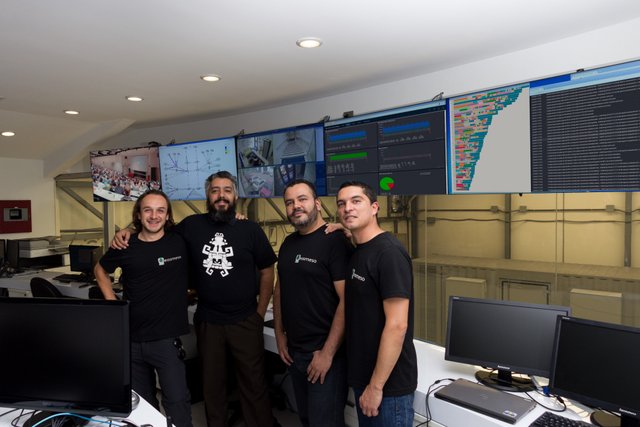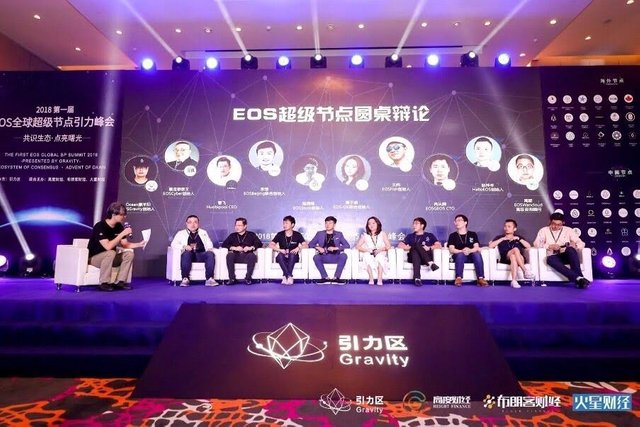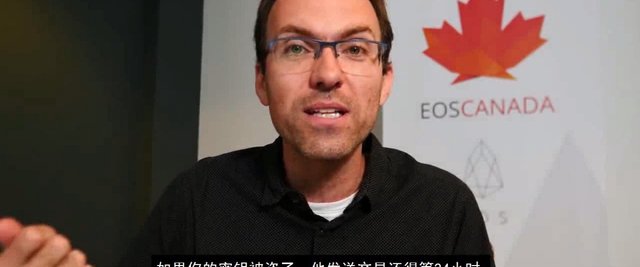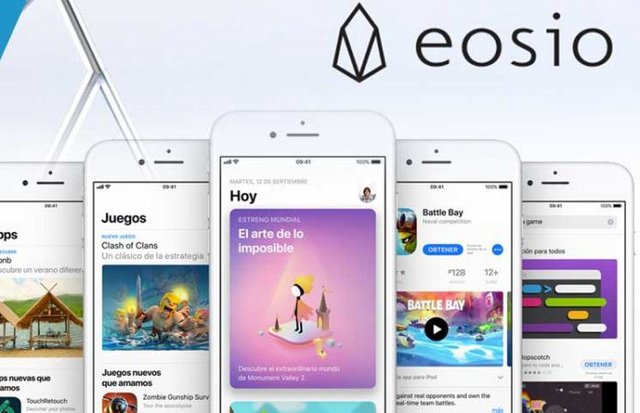My first time travel experience
In my last article, I wrote about the time machine I’m building and I’m leaving written evidence in the blockchain to prove it. Before starting on this adventure, I did not believe that time travel was possible. But a mayor event in human's history made me experience time travel for the first time, proving that it was indeed possible.

EOS Launching Team
I had been chosen to be a part of one of the many teams around planet Earth who were synchronizing the launch of a new operating system, something so unique no one had never seen anything like it before. I left my friends and family for a trip into the unknown and I didn’t know how long I would be gone for. It took years to achieve the communications, confidence, security, and certainty to turn on this new operating system, because once it was turned on, there would be no going back. Hundreds of people, endless calls across multiple time zones, tens of thousands of man hours invested in until we finally press the power button. It was a total success and in June of 2018, the EOS Mainnet was born. After tracking this new operating system for a few years and making sure everything was going according to plan, I would go back to my old life. I would retire on a farm far from technology, or possibly write a science fiction book. I imagined the rest of my life as a final chapter of some television series. With more pounds of weight and less hair on my head, I eventually went back to my family. But when I returned, I realized that for those whom I had left behind, it had not been more than two months. That was the moment I realized time I could travel through time.
The EOS blockchain operating system had been developed for over a year and was ready to go. The first app that would run in this new operating system would be a distributed banking system. More than 400,000 bank accounts with a total initial balance of more than USD $ 4,000,000,000 would be handled within one second after the EOS network was initiated. Approximately 200 teams from around the world participated in the launch of this network. Most teams, known as Block Producer Candidates, had never seen each other before. Were they equally committed to the project? Were they technically qualified to operate the network? Could we trust the other teams? Or were they interested in injecting malicious code to manipulate and take over the funds?

Teams in other time zones
Or even worse! Were they members of other blockchains who stood to gain a lot by making the EOS launch fail? Were they part of the traditional banking sector and trying to keep us in the past? Who could we trust and would other teams trust us?
In our team, the roles emerged organically. Everyone was doing what they could do best. I was the project manager and I started this like any other project I had previously handled. I defined tasks, divided them into sub tasks, evaluated priorities and assigned responsibilities. We did the paperwork, filled out some forms, acquired equipment and started writing documentation. Built the infrastructure, the servers, the nodes, the services, and connected to other nodes. Several teams already knew each other and had begun to try to connect with each other. We had started late in the race, and several groups had more experience than us. Thankfully, being first didn’t matter and the more experienced teams were happy to help others. The goal was to launch the network, together.

Hours long video calls
Suddenly, everything started happening in fast forward. The discussion channels began to multiply, each with different subtopics. Problems compiling the code? Go to channel X. Problems with the firewall? Check out channel Y. There were more than 80 different communication channels and you had to be up to date with everything that happened in all of them, and still do your job. In my team we decided to hire 3 people who would rotate shifts so that they were aware of all the channels and making summaries of everything. The communication was very complicated, especially since there were so many people all over the world in different time zones participating in these discussions. By the time we resumed one topic, another group from another time zone would start adding their inputs, thoughts and conclusions. Worldwide group calls with all the teams grew in both length and frequency, leading many of us to sacrifice more and more sleep.
The technology was also evolving at this rapid pace. The ecosystem was a desert when we started. We built our own tools because none existed. We created tools for validating initial balances, to launch protocols and to coordinate that launch. We wrote our own documentation manuals and there were no graphical user interfaces. We also had to find users with at least 15% of the total funds to interact with the network and to approve the launch. We had to build those graphical interfaces. It was a desert; a no-man’s land; an unexplored frontier. We were the first. Everything we built, we then improved it. Any protocol or program could be totally obsolete a week after it was created, because there were so many people building at the same time. Everything was evolving very fast.

EOS Canada, built eos-bios
In terms of conversations in the ecosystem, you had to be up to date. If you did not know that a certain application was already in disuse, you were out of the conversation. And maybe it had just been created! From day one, eos-bios was the tool we used to do the start-up tests, and after many tests, it was decided that it would no longer be used. I already had the necessary practice to be able to use it at any time, I had already read the code and understood everything internally. I felt I had my whole life using that tool, but it had not been more than 4 weeks. Time is relative.

EOS "wallets"
The development speed of EOS has not stopped, nor has it slowed down. On the contrary, complete blockchains have been reduced to one more app within the EOS blockchain. Before, specialized apps called “wallets” were used to manage your account balances. Now the apps that interact with EOS are “apps stores” where you can see all the apps for EOS, organized by categories. Managing the balance of your account is just another functionality in the app. To keep calling them “wallets” would be like calling smart phones “calculators”. Problems that had not been solved before, such as Inter Blockchain Communication, now have multiple proposals on how to be solved. Things like kitties on a blockchain or passing around a torch used to be newsworthy items, showcasing the power of other blockchains. These days, they are used as beginner tutorials for those starting to build on EOS. The development speed is impressive because it’s not a competition, it’s a common vision.
The development speed IS the time machine. The DPoS consensus system rewards those who invest in the development of that time machine, not those who spend money on video cards and burn electricity. We are a few months away from the one-year anniversary of the EOS Mainnet launch and it already feels like it was decades ago. Hold on tight because things are only going to accelerate from here!
Congratulations @stuardo! You have completed the following achievement on the Steem blockchain and have been rewarded with new badge(s) :
You can view your badges on your Steem Board and compare to others on the Steem Ranking
If you no longer want to receive notifications, reply to this comment with the word
STOPTo support your work, I also upvoted your post!
Vote for @Steemitboard as a witness to get one more award and increased upvotes!
Congratulations @stuardo! You received a personal award!
You can view your badges on your Steem Board and compare to others on the Steem Ranking
Vote for @Steemitboard as a witness to get one more award and increased upvotes!